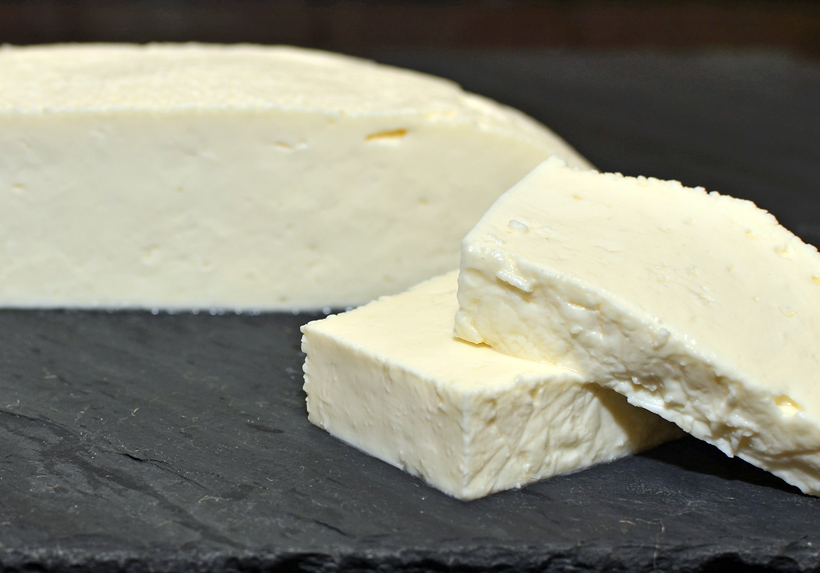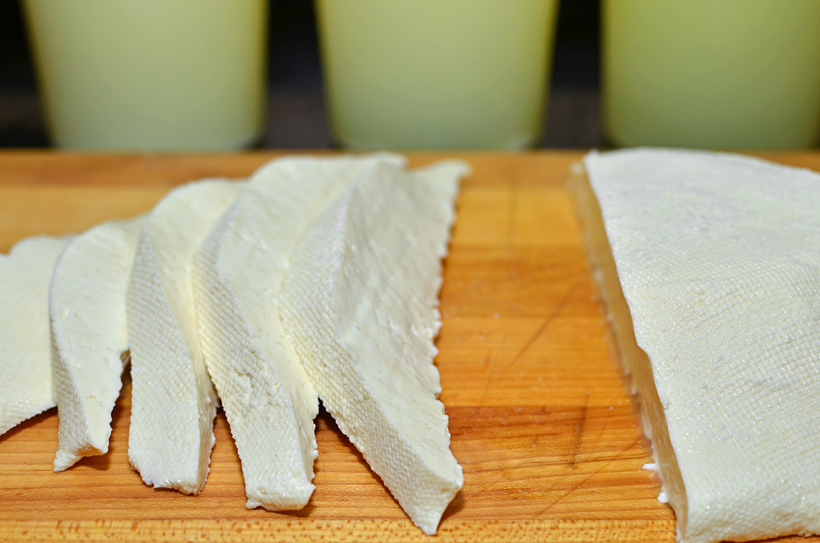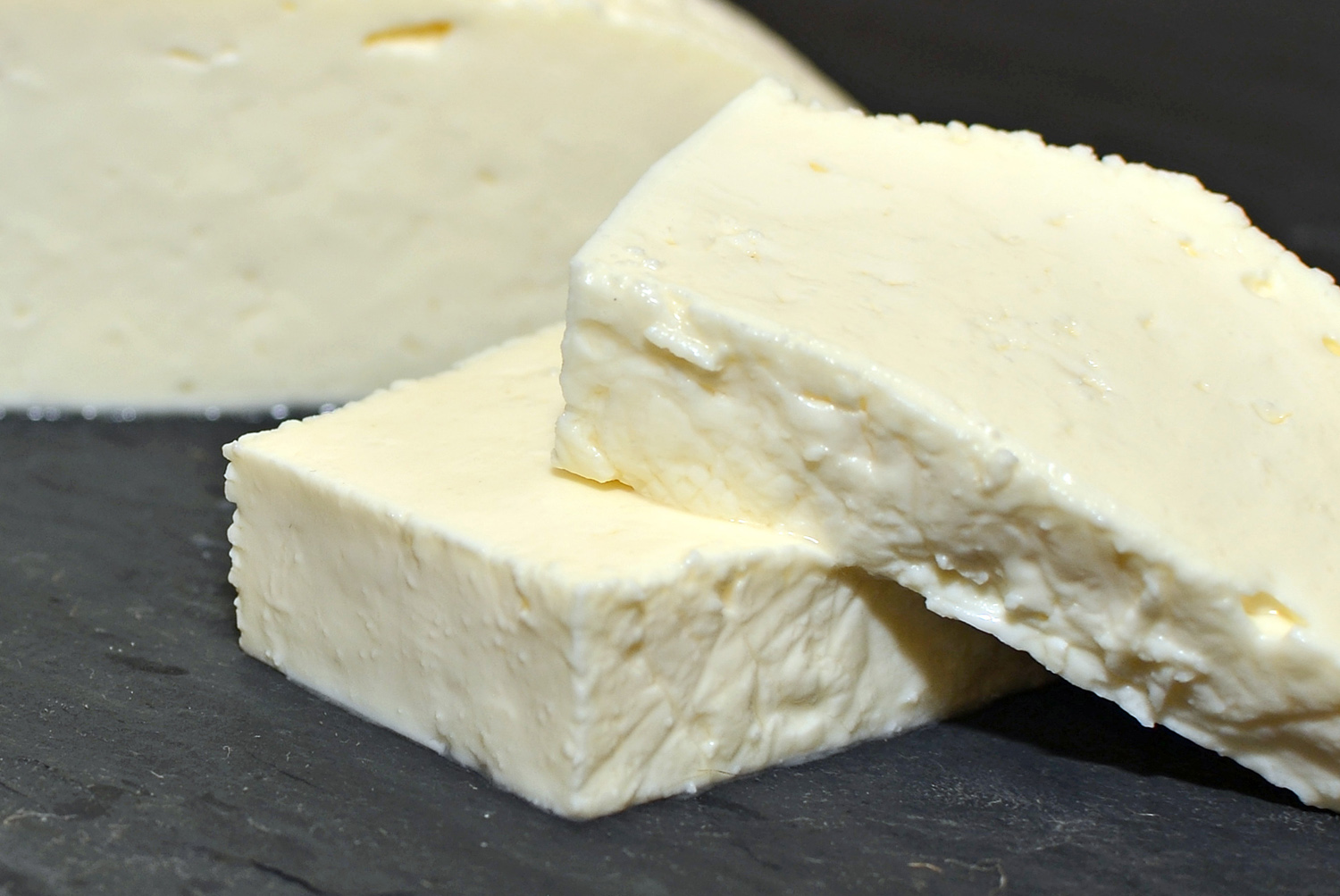So you want to make your own cheese but don’t want to break the bank buying a cheese press? You don’t want to spend your weekends monitoring the temperature of your milk, or get up in the middle of the night to heat / stir / drain / flip your curds every 30 minutes? Well why not try Imeretian cheese!
Imeretian cheese is a fresh cow’s milk cheese. Although it originated in the Imereti region, you can find it everywhere in Georgia, whether it’s homemade or bought at the market. There are many variations, the subtleties of which haven’t really been recorded in a book so far, to the best of my knowledge. This is the cheese traditionally used in khachapuri, the infamous Georgian cheese bread. This is also the basis for another well-known Georgian cheese called sulguni (more on this in another post).
My recipe is adapted from Tinatin Mjavanadze’s Georgia with Taste and is as simple as it gets. I’ve seen more complicated versions, some of them adding buttermilk starter, but I’ve tried them and found the results to be inferior. All you need to prepare my Imeretian cheese is rennet (which can be purchased here), a big pot, a sieve, and a thermometer. The cheese only takes 3 hours to make, followed by aging, and requires minimal active participation — you can easily do something else at the same time.

Imeretian cheese
Yields about 28 oz cheese and 3 qt whey
1 gal whole milk
1/2 tsp liquid rennet, diluted in 2 oz water
about 0.5 oz salt (see below)
- In a large pot, heat the milk to 30 C / 86 F. (To keep the milk at approximately the same temperature throughout the process, you can place the pot in a kitchen sink or a bath tub filled with water that’s also at 30 C / 86 F.)
- Add the rennet, and stir with a spatula for 1 minute with an up-and-down motion. Cover, then let rest for 45 minutes. Timing is important to obtain the right acidity level and texture.
- Cut the curds into 1″ blocks with a knife, then stir very gently with a wire whisk to get pieces about 1/10″ large. Let rest for 20 minutes.
- Pour into a sieve to drain. After 5 minutes, collect the whey — you should have about 1 qt. Gently scrape the sides of the sieve with a spatula to help drain the curds faster. Wait another 15-20 minutes, then collect the whey again, and scrape the sides again. Wait 45 more minutes to collect the whey one last time. You will have about 3 qt of whey (there will still be a little bit more liquid draining for the following couple days).
- Let the cheese rest in the sieve at room temperature for about 8 hours.
- Remove the cheese from the sieve, weigh it, and measure 1.5% of that weight in salt. Sprinkle the salt on both sides, then wrap in plastic film, and refrigerate for at least 2 days. The cheese can be kept in plastic wrap for about a week, or in a salty brine for a few weeks.



20 comments
[…] also had to make my own cheese, which took yet more time to perfect; I’ve posted my takes on Imeretian cheese and sulguni […]
Is the temperature supposed to be Fahrenheit or Celsius? 86F seems pretty low.
Hi William, 86 Fahrenheit, that’s right.
The gal of milk is that american or english?
Hi Elise, this is an American gallon, about 3.785 liters.
86F implies that a mesophilic bacterial starter is being used, such as that in cultured buttermilk. Imeretian cheese is generally described as being slightly sour, which would require bacteria to be working on the curds to lower the pH. Perhaps 50ml (~1/4 cup) fresh buttermilk should be added to the milk at the start? (Note that the cultures used in yogurt require a higher temperature, on the order of 116F.)
Hi Peter, as I mention in my introduction, some recipes do use some buttermilk starter. I thought the result wasn’t as good when I tested them, but feel free to give it a try yourself.
I usually make a batch of tvorog but I’m
Going to have to give this one a shot next time! Thank you!!
Hi, do you line the sieve with a cheese cloth…? 🙂
Hi Pinkmanta, if you’re using a fine sieve, you won’t need the cheesecloth.
Does this version of Imeretian cheese melt well (eg., for khachapuri?)
Any quick comments on how this cheese is similar / different to sulguni, on one hand, or cows milk feta, on the other? This is the one with air bubbles, right?
Hi Jordan, to find the answers to your questions I recommend that you check out my posts on sulguni and Imeretian khachapuri!
How salty should the brine be?
Hi Mon, I would suggest 100 g of salt for 1 liter of water (about 3.3 oz of salt for 1 quart of water).
Does this recipe work with whole, pasteurized, homogenized milk?
Hi Meghan, it does!
If you use a salty brine, do you still need to sprinkle it with the 1.5% of salt?
Hi Matt, if you use a salty brine then you probably don’t need to sprinkle the cheese with salt, but I must say I’ve never tried.
Hi, would you recommend using paseurised milk or raw milk?
Hi Ciara, both will work. Go with raw milk if you can easily find some.